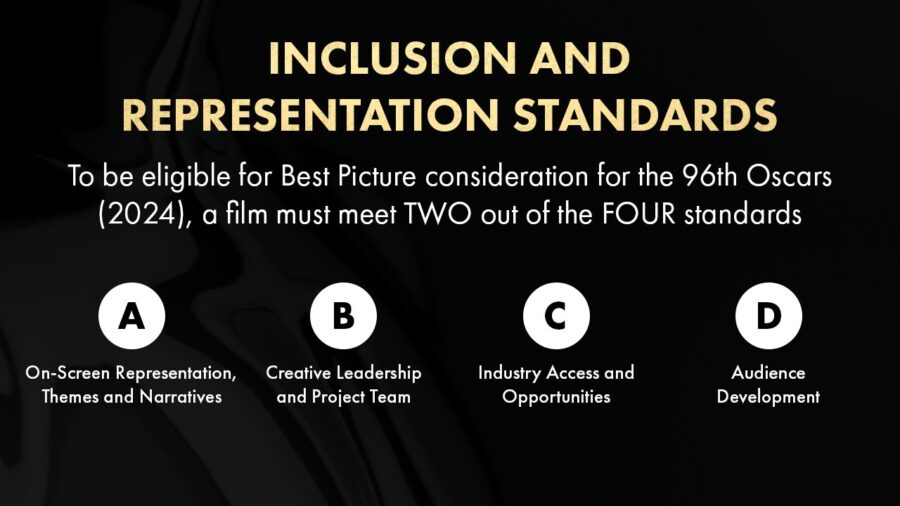Movies Are Now Required To Meet These Inclusion Standards
New rules will affect the prestigious awards show. Diversity is now required.
This article is more than 2 years old

Oscar contenders will have a new set of rules to abide by in the next few years. The Academy of Motion Picture Arts and Sciences announced that they will be requiring any films submitted for Best Picture consideration to meet certain criteria in regards to representation. This new directive will take effect in 2024.
The Oscar ceremony came under fire five years ago when the hashtag movement #OscarsSoWhite dominated the conversation surrounding the awards program. Since then, the Academy of Motion Picture Arts and Sciences has been attempting to make diverse inclusion a part of their voting process. This newest initiative has been developed over the past few months and has finally been revealed for the upcoming future. In a statement, the Academy said they want to, “encourage equitable representation on and off screen in order to better reflect the diversity of the movie-going audience.”
In order for a Best Picture contender to be eligible for an Oscar, it has to meet two of four diversity benchmarks that have been set by the Academy. These benchmarks include: featuring actors from underrepresented groups in prominent roles or accounting for a minimum of 30% of the cast, similar criteria in regards to crew and creatives behind the scenes, a significant commitment to paid apprenticeships, internships, and career development, and significant representation regarding the members involved in devoted to distribution, marketing, and publicity.
These criteria have been assigned four categories: “Onscreen Representation, Themes and Narratives,” “Creative Leadership and Project Team,” “Industry Access and Opportunities” and “Audience Development.” The types of underrepresented groups include women, people of color, LGBTQ+ persons and those with cognitive or physical disabilities.

It should be noted that these criteria will not apply to other Oscar categories. Only the Best Picture nominees will have to meet these standards. However, it is very likely that this will influence the other categories as the Best Picture nominees often find facets of themselves showing up in other nomination categories.
The Academy has also tried to diversify its Oscar voting ranks for the last four years. In June, 819 new members were invited into the Academy. 45% of those new members were women and 36% were people of color. Representation among people of color has more than doubled in the Academy since the initiative was started in 2016.
During the Oscar campaigns for 2022 and 2023, movies will have to submit an “inclusion standards” form. This form will be confidential and won’t prevent eligibility until the 96th Academy Awards in 2024. This template for diversity was made in conjunction with the Producers Guild of America and was inspired by the diversity criteria employed by the British Film Institute.
Does this mean we could begin seeing a more eclectic and varied selection of films in the Best Picture category? Or will these new diversity measures begin to affect how the big studios approach their Oscar contender films? No matter what, it is good to know that the Academy is attempting to do something to give underrepresented stories and workers a better place in the spotlight. Exactly how that will all work out remains to be seen.











